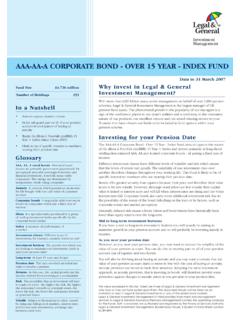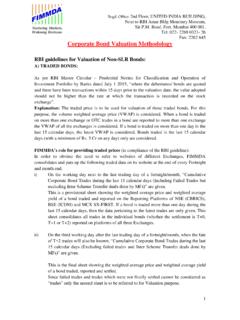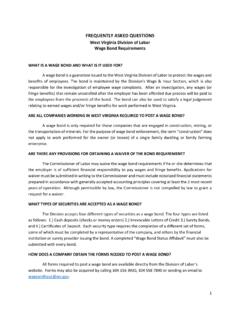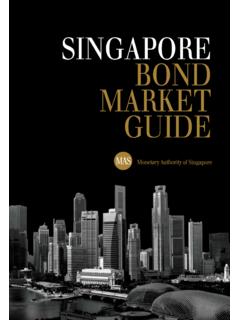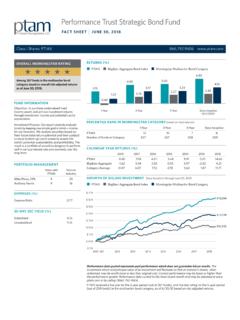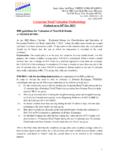Transcription of CORPORATE CREDIT RISK MODELING: …
1 CORPORATE CREDIT RISK MODELING: QUANTITATIVE RATING SYSTEM AND PROBABILITY OF DEFAULT ESTIMATION Jo o Eduardo Fernandes1 April 2005 (Revised October 2005) ABSTRACT: Research on CORPORATE CREDIT risk modeling for privately-held firms is limited, although these firms represent a large fraction of the CORPORATE sector worldwide. Research in this area has been limited because of the lack of public data. This study is an empirical application of CREDIT scoring and rating techniques to a unique dataset on private firms bank loans of a Portuguese bank. Several alternative scoring methodologies are presented, validated and compared. Furthermore, two distinct strategies for grouping the individual scores into rating classes are developed.
2 Finally, the regulatory capital requirements under the New Basel Capital Accord are calculated for a simulated portfolio, and compared to the capital requirements under the current regulation. KEYWORDS: CREDIT Scoring, CREDIT Rating, Private Firms, Discriminatory Power, Basel Capital Accord, Capital Requirements JEL CLASSIFICATION: C13, C14, G21, G28 1 Correspondence Address: R. Prof. Francisco Gentil, E1 5E, 1600-625 Lisbon Portugal, email: 1 1 Introduction The CREDIT risk modeling literature has grown extensively since the seminal work by Altman (1968) and Merton (1974). Several factors contribute for an increased interest of market practitioners for a correct assessment of the CREDIT risk of their portfolios: the European monetary union and the liberalization of the European capital markets combined with the adoption of a common currency, increased liquidity, and competition in the CORPORATE bond market.
3 CREDIT risk has thus become a key determinant of different prices in the European government bond markets. At a worldwide level, historically low nominal interest rates have made the investors seek the high yield bond market, forcing them to accept more CREDIT risk. Furthermore, the announced revision of the Basel capital accord will set a new framework for banks to calculate regulatory capital2. As it is already the case for market risks, banks will be allowed to use internal CREDIT risk models to determine their capital requirements. Finally, the surge in the CREDIT derivatives market has also increased the demand for more sophisticated models.
4 There are three main approaches to CREDIT risk modeling. For firms with traded equity and/or debt, Structural models or Reduced-Form models can be used. Structural Models are based on the work of Black and Scholes (1973) and Merton (1974). Under this approach, a CREDIT facility is regarded as a contingent claim on the value of the firm s assets, and is valued according to option pricing theory. A diffusion process is assumed for the market value of the firm s assets and default is set to occur whenever the estimated value of the firm hits a pre-specified default barrier. Black and Cox (1976) and Longstaff and Schwartz (1993) have extended this framework relaxing assumptions on default barriers and interest rates.
5 For the second and more recent approach, the Reduced-Form or Intensity models, there is no attempt to model the market value of the firm. Time of default is modeled directly as the time of the first jump of a Poisson process with random intensity. These models were first developed by Jarrow and Turnbull (1995) and Duffie and Singleton (1997). 2 For more information see Basel Committee on Banking Supervision (2003). 1. INTRODUCTION 2 For privately held firms with no market data available, accounting-based CREDIT scoring models are the most common approach. Since most of the CREDIT portfolios of commercial banks consist of loans to borrowers that have no traded securities, these will be the type of models considered in this research3.
6 Although CREDIT scoring has well known disadvantages, it remains as the most effective and widely used methodology for the evaluation of privately-held firms risk profiles4. The CORPORATE CREDIT scoring literature as grown extensively since Beaver (1966) and Altman (1968), who proposed the use of Linear Discriminant Analysis (LDA) to predict firm bankruptcy. On the last decades, discrete dependent variable econometric models, namely logit or probit models, have been the most popular tools for CREDIT scoring. As Barniv and McDonald (1999) report, 178 articles in accounting and finance journals between 1989 and 1996 used the logit model.
7 Ohlson (1980) and Platt and Platt (1990) present some early interesting studies using the logit model. More recently, Laitinen (1999) used automatic selection procedures to select the set of variables to be used in logistic and linear models which then are thoroughly tested out-of-sample. The most popular commercial application using logistic approach for default estimation is the Moody s KMV RiskCalc Suite of models developed for several countries5. Murphy et al. (2002) presents the RiskCalc model for Portuguese private firms. In recent years, alternative approaches using non-parametric methods have been developed.
8 These include classification trees, neural networks, fuzzy algorithms and k-nearest neighbor. Although some studies report better results for the non-parametric methods, such as in Galindo and Tamayo (2000) and Caiazza (2004), we will only consider logit/probit models since the estimated parameters are more intuitive, easily interpretable and the risk of over-fitting to the sample is lower. Altman, Marco and Varetto (1994) and Yang et al. (1999) present some evidence, using several types of neural network models, that these do not yield superior results than the classical models. Another potential relevant extension to traditional CREDIT modeling is the inference on the often neglected rejected data.
9 Boyes et al. (1989) and Jacobson and Roszbach (2003) have used bivariate probit models with sequential events to model a lender decision problem. In the first equation, the decision to grant 3 According to the Portuguese securities market commission (CMVM), at 31 December 2004 only 82 firms had listed equity or debt (CMVM 2005). 4 See, for example, Allen (2002). 5 See Dwyer et al. (2004). 1. INTRODUCTION 3the loan or not is modeled and, in the second equation, conditional on the loan having been provided, the borrowers ability to pay it off or not. This is an attempt to overcome a potential bias that affects most CREDIT scoring models: by considering only the behavior of accepted loans, and ignoring the rejected applications, a sample selection bias may occur.
10 Kraft et al. (2004) derive lower and upper bounds for criteria used to evaluate rating systems assuming that the bank storages only data of the accepted CREDIT applicants. Despite the findings in these studies, the empirical evidence on the potential benefits of considering rejected data is not clear, as shown in Crook and Banasik (2004). The first main objective of this research is to develop an empirical application of CREDIT risk modeling for privately-held CORPORATE firms. This is achieved through a simple but powerful quantitative model built on real data randomly drawn from the database of one of the major Portuguese commercial banks.
